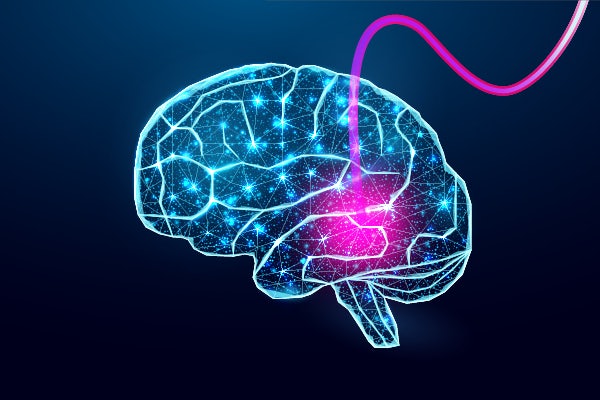Advanced imaging may shed light on mechanisms behind Alzheimer’s disease
Song Hu plans to develop deep-brain fiber-optic techniques to investigate the cause of memory loss in Alzheimer’s disease

Alzheimer’s disease affects more than 6 million people in the U.S., a number expected to quadruple by 2050 if no cure is found. A hallmark of Alzheimer’s disease is misfolded amyloid deposits in the brain, which can precede the onset of dementia by decades. These deposits can restrict blood flow and thus oxygen supply to neurons. The effects of the amyloid deposits have long been associated with hippocampal-dependent memory loss, an early and key feature of Alzheimer’s disease, however, the causal relationship between the two remains to be confirmed.
Song Hu, associate professor of biomedical engineering in the McKelvey School of Engineering at Washington University in St. Louis, in collaboration with Xiaoting Jia, associate professor of electrical and computer engineering at Virginia Tech and Harald Sontheimer, professor and chair of neuroscience at the University of Virginia, plans to tackle this challenge through the development of a bi-directional, fiber-optic interface that will allow high-resolution imaging and focal manipulation of neurovascular function in the hippocampus of mice with Alzheimer’s disease.
With a one-year, $795,000 grant from the National Institutes of Health’s National Institute on Aging, Hu will combine photoacoustic and fluorescence microscopy in a hair-thin optical fiber to get concurrent images of amyloid deposits, blood oxygen and flow, and neuronal activity in the hippocampus, a deep-brain region that controls memory, of the affected mice. In parallel, Jia will develop a complementary fiber technique for deep-brain electrical stimulation and drug delivery. Ultimate integration of the imaging and manipulation techniques in a single fiber device will allow them to use focal electrical stimulation and imaging to assess neurovascular function and deliver drugs to “open” the amyloid-affected blood vessels. Monitoring and correlation of neurovascular dysfunction and memory loss in the hippocampus of mice with Alzheimer’s disease is expected to reveal the causal relationship between them, and local manipulation of vascular function via drug treatment will provide a better look at whether retrieving blood oxygen supply in the hippocampus can improve memory loss.
“We are looking to find a direct cause between amyloid-induced neurovascular dysfunction and memory loss in the hippocampus, where Alzheimer’s disease originates, by developing and applying this first-of-its-kind, bi-directional, deep-brain, fiber-optic interface,” Hu said. “By allowing long-term, microscopic assessments of the neuronal activity, blood oxygen delivery, and amyloid deposition in the hippocampus of Alzheimer’s disease mice with known memory status, this new technique may help shed light on the pathogenesis of this devastating disease and inspire new strategies to slow its progression.”




